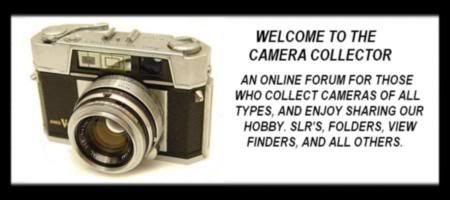|
|
Post by belgiumreporter on Jan 8, 2018 6:07:12 GMT -5
With the abundance of (film) cameras available on the second hand market, people can be picky on what they choose. Some cameras reached cult or classic status and are traded for good money.On the other side there's a lot of cameras that didn't reach any status and are sold for peanuts, those are the ones you often find in garage sales or charity shops and such. It's just by the chear abundance they can be found for next to nothing, not because they are bad, but just because they are not the right brand, have a non common mount, lack a few features or recieved a bad reputation over the years. In this thread i would like to present a few of these "underdogs" and see how they live up to their reputation if ever they had one. The first i would like to prpose is this Ricoh KR10-X. I allways liked Ricoh as they seemed to offer cameras with just that bit more or some strange feature not found on other competitors in their price range. Now the good on the KR10-X -K-mount lenses -Wide range of selectable shutter speeds -Aperture priority -provision for winder or motor drive -Clear viewfinder with diagonal split image central spot. -Indicators in the viewfinder - Exposure Adjustment, Bulb, Manual, Overexposure, Underexposure, Shutter Speeds, Slow Shutter, Long Time Exposure, Battery Low Warning, Flash Ready (LED) Light -Self timer -Works on easy to find cheap LR type batteries. -ASA up to 3200 The bad: -Nothing works without the batteries -No depht of field preview -No double exposure provision The very bad: These Ricoh's are known as being unreliable and so is this one, everything works but the shutter wont trip. Conclusion, if you can find one very cheap it might be worth it if it indeed works, worst case scenario, the lens could be salvaged as its K-mount.Not the kind of camera you would take on a trip risking it'll break down half way.   |
|
|
|
Post by julio1fer on Jan 9, 2018 18:26:21 GMT -5
Many M42 types come to mind, for instance Revueflexes.
|
|
|
|
Post by hannes on Jan 11, 2018 13:49:33 GMT -5
Revueflex, they always had the smell of cheap super market cameras. But under the label there have been various brands from all over the world. I think it started with the Zenit 3M, a M39 SLR having its roots in the Leica II.  Zenit 3M labeled as Revueflex and Zenit S Zenit 3M labeled as Revueflex and Zenit S Revueflex E aka Zenit E fall both into this categorie. Very robust simple workhorses produced in millions. Nobody really loved them but many had them. Today the hype around the Helios 44 lens brings also the Zenit E back into memories. 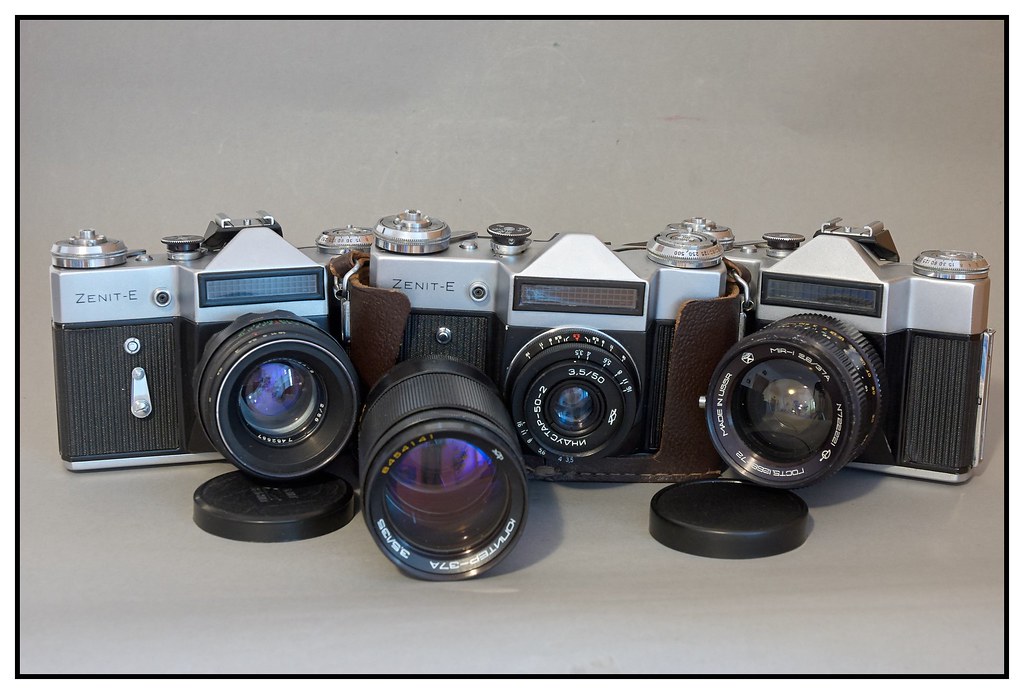 3 Zenit E with lenses 3 Zenit E with lensesMy favorite Revuelex is the 5005, this is a Chinon Memotron CE II without the Memotron function. In my eyes this is the best M42 SLR with automatic aperture. While the Chinon Memotron gets expensive today you still can get the Revueflex edition for a bargain. 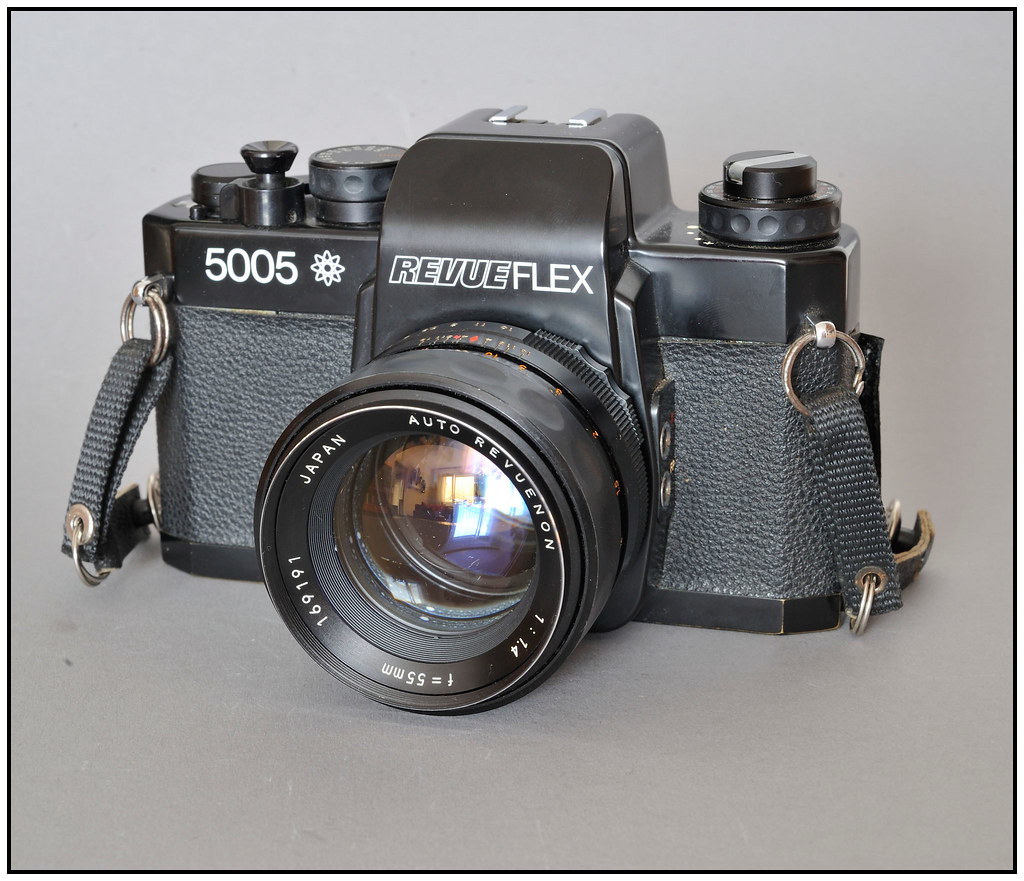 Revueflex 5005 with Auto Revuenon 55mm f1:1,4 lens Revueflex 5005 with Auto Revuenon 55mm f1:1,4 lensCollecting all Revueflex models would be a challenge. Hannes |
|
|
|
Post by julio1fer on Jan 11, 2018 19:07:22 GMT -5
Indeed!
I once had an M42 Revueflex, IIRC Chinon made but older than your favorite 5005. Got it very cheap locally. It came with a 55/1.7 that was not bad.
The Zenits worked. A 3M was my first SLR, I used it for more than 12 years. Never got any lens but the Helios-44, which (in any case) would not unscrew. The later Zenits were less elegant than the 3M, IMHO.
Hard to understand why a given camera or model gets catapulted to cult status, while other similar or (objectively) better models go for pennies. Market imperfections, they tell me.
|
|
|
|
Post by belgiumreporter on Jan 12, 2018 3:06:55 GMT -5
Here's another bargain,i think i got this one for free. In comparison to many other "bargains" this Chinon CM7 is a really good camera. It is in fact a rebadged cosina CT and is basicly the same as the nikon FM10, Canon T60, olympus OM2000 and so forth...  The good: -Fully mechanical batteries only needed for the light metering circuit. -Vertical travel metal shutter speeds 1sec to 1/2000sec -1/125 flash sync -K-mount (lenses) -self timer, that also locks up the mirror in advance. -three led +0- metering readout -Decent viewfinder/ focussing screen The bad: -Flimsy tripod coupling -No dof preview -often offered with zoom lenses wich aren't that great -Led metering readout not everybodies cup of tea -Limited info in the viewfinder -No provision for winder or motor drive -All plastic -Gun metal finish very vulnerable for wear -Rather dim viewfinder with small aperture lenses such as most zooms or longer tele's The very bad: -nothing i can think of Conclusion: a very good all basic camera that is unlikely to let you down as it's operation isn't battery dependable, unless you are a die hard pro the plastic finish won't be much of a problem, drop it and just about any camera wont like it and give you trouble, to some extend the plastic is more flexible than metal. I would prefer this low end Japanese camera over any Russian (Zenith) or East German (Practica) even though it is simple it is still a lot more refined than the offerings from behind the iron curtain. |
|
|
|
Post by belgiumreporter on Jan 16, 2018 6:25:45 GMT -5
Praktica's are good examples of undesirable cameras, most of them are very low on specs, the main reason they are around in such great numbers is they where in the lowest price range, but did provide (some) value for money. Today they can easely be picked up for little or no money. Prices however are a bit on the rise, not because people all of the sudden realised the virtues of owning a praktica, but mainly because the 1:1.8 lenses perform very well on digital. So as with so many of these cameras, they are being scavenged for the optics, and the bodies become landfill. This MTL3 is one of the better as it has a few more features.  The good: -Exept for the meter , no batteries needed -Great 50mm pentacon lens -self timer -dof preview -Straight forward operation -M42 mount The bad: -Relative dim viewfinder -Not very sophisticated finish and operation -Limited range of shutter speeds -Limited range light meter -M42 Mount (even though lenses are easy to be found, shorter than 28 or longer than 200mm focal lenghts won't be that easy to find and if you find one they are likely not to be cheap) -Some models known for reliability issues. Conclusion: not my favourite M42 mount camera, for the same or a little more money a lot of japanese M42 mount cameras can be found, that are just better. |
|
|
|
Post by belgiumreporter on Jan 17, 2018 3:59:17 GMT -5
This Pentax P30n is the last of the P series, it is interesting as it is also the last with manual film transport so the LR44 batteries are only used for the meter and shutter, wich means theyll go a long way. over the years Pentax had lost some of its A brand shine and the all plastic P and later series didn't rank high on the desirability list.  what's good: -aperture prioruty,shutter priority,fully programmed auto-exposure, or metered manual exposure -info in viewfinder -Manual film transport -large bright viewfinder (typical Pentax) -Self timer -DOF preview -K-mount -A-brand Whats not so good: -All plastic made in China (though no issues are known) -Shutter fully battery dependable, no batteries, no shooting! -Manual wind only. -No EV compensation. -Somewhat limited range of shutterspeeds. Conclusion: maybe not so much a "collectable" but surely a good user camera with all exposure possibilities you can think of. At the prices they can be found real bargains, especially with one of the 50mm takumars mounted. The center weigthed metering may be a little dated compared to today's matrix metereing, but still very capable in most situations, in combination with some good Pentax glass, top results can be achieved. I paid 15€ for this P30n with the takumar 1:2 50mm, it dosn't get much better than this! |
|
|
|
Post by julio1fer on Jan 21, 2018 19:49:31 GMT -5
That's an idea, I have been thinking of getting a modern body for my Pentax glass (accumulated for a K-1000), was looking at MX types, but this looks better for my needs. Must read a bit on the P30 series.
|
|
|
|
Post by belgiumreporter on Jan 24, 2018 6:42:47 GMT -5
Petri has allways been an underdog in cameraland, even though their history dates back to 1907 theres very little to be found on the net concerning Petri. The GX-1 is the last camera to bear the Petri name, but it isnt a "real" Petri as it is a rebadged Cosina. Unlike some other Cosina's this one has only the very basic features. Because of it's low profile these are the ones that mostly turn up in garage sales, charity shops and such, mine came from a charity shop and cost me 2€ with the vivitar 28mm. The good: -Fully mechanical -It's a Cosina -Led +0- meter readout -Easy to find LR type battries only needed for the meter -K-Mount The not so good: -Very basic -No double exposure -No DOF preview -No self timer  Conclusion: they don't come cheaper than this.While the original Petris have a limited range of lenses due to their specific bayonet mount, the GX-1 with its K-mount dosn't have that problem. A great thing about this Petri: after who knows how long it was on the shelve, when i picked it up everything worked just fine, wich is something i can't say about some of my Contaxes costing 100 times more! |
|
|
|
Post by pendennis on Jan 24, 2018 10:30:01 GMT -5
The earlier Petri's were underdogs in the late 60's and early 70's. My first was an FT. All manual, stop-down metering, but a very sharp 55mm f/1.8 lens. Mine was as reliable as a camera could be, although late in its useful life, the meter got rather "iffy", and needed repair several times. One of the things I really liked was the breech-lock lens mount; very positive and strong. Shutter was very accurate, and kept great time over the years. I added the FT-EE to it, but later opted for the Pentax, even though they still had the M42 mount. The FT-EE wasn't as sturdy, even tthough it had open-aperture metering.
|
|
|
|
Post by belgiumreporter on Jan 27, 2018 8:53:46 GMT -5
Now with so many rebadged or cloned Cosina's one tends to forget Cosina makes cameras under their own name. This EC-1 solar is a strange beast though as it's fully mechanical but has a solar powered light metering system. The light meter circuit needs light in order to operate and take readings, now in the old days selenium meters didn't needed batteries, but the one in this Cosina is a cds meter. Cosina claims the camera is equipped with a "solar" battery but us normal folks would call this a capasitor. It is able to store a charge for 10 minutes of light metering, though in day light the solar panels provide enough current for continuous operation.Metering is indicated left in the viewfinder with a non illuminated +0- LCD panel. The good: -Broad range of shutter speeds up to 1/2000th -Flasch sync of 1/125th -DOF preview -Possibility for double exposures -K-mount -Light weight -No batteries needed even for the meter The not so good: -Meter needs light to operate -body covering detoriates easely -winder or motordrive not possible -All plastic( exept for the lens mount)  Conclusion: probably hard to find,collectiblend rates this one between 60 to 180$ but not many people know this and garage sale finds could be possible, maybe you could be lucky... . All in all a very interesting and usable camera, i found this one for 25€ with the cosina 50mm 1.7 on it. And yes the solar circuit still works fine. |
|
|
|
Post by belgiumreporter on Jan 29, 2018 3:39:35 GMT -5
And another Cosina, the C1 all plastic and lightweight, nothing much in the "extra" departement, but still e very usable range of all mecanical shutterspeeds up to 1/2000th sync at 1/125th. The good: -K=mount -All mecanical -Lightweight The not so good: -Very basic featues -All plastic.  Conclusion: these all mechanical Cosinas can be found very cheap and seem to be rather reliable it simple construction has little to go wrong.Very straightforard camera wich could be a good alternative for a Pentax K1000. The all plastic issue won't be a problem unless you're shooting ten rolls a day and change lenses every 15 minutes. |
|
|
|
Post by belgiumreporter on Jan 29, 2018 8:19:32 GMT -5
The compact nikons never were very popular, and so EM's FG's and FG 20's sometimes can be found very cheap. Most of them have become odsolete because their (original)lenses,because of their exeptional qualities, have been re-used on later or digital bodies . The one to go for is the FG it has all the goodies, flash OTF exposure, manual,aperture and program modes and has one mechanical shutter speed in case of battery failure. Because many people dont know the diffrence between the EM, FG and FG20, FG's can be found at the same price as the others. I was (very) lucky to find my FG with original nikkor for a mere 2€. The good: (FG) -It's a Nikon! -all exposure modes possible -OTF flash exposure -Compact -Motor and winder capability -Self timer - +- 2EV exposure compensation -Large supply of lenses and accesoires The not so good: -No DOF preview -No MLU -No matrix metering -Good but not real Nikon quality  Conclusion: The FG leaves little to be desired in the compact class slr range. With some nice Nikon glass it can be more versatile and cheaper than many other Nikon body (Mat, FE,....)Surely there are better Nikons but not at FG prices. EM and FG20 are lesser well equipped, but can still be fun! |
|
|
|
Post by hannes on Feb 10, 2018 13:06:32 GMT -5
Good that you mention the Nikon FG I like mine, I got it 2014 on eBay for < 10€ with case and additional zoom lens. The FG is a really nice camera to have with you when you wanna go out light. I shot this image with my FG and the 50mm E series lens. 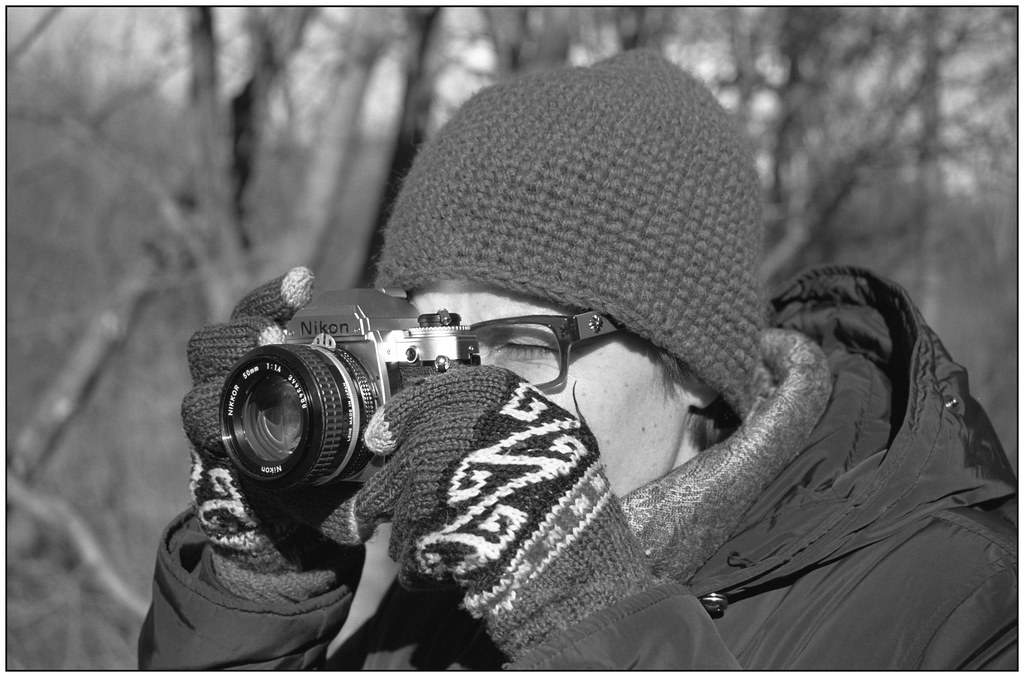 The FG was the last "classic" Nikon. Next was the F301 which I would also say it falls in the category of underrated and undesirable cameras. This is my F301, it was my first Nikon, I bought it used about 1995 and used it till I switched to digital 12 years later. It was a very reliable travel companion and never failed. I shot mostly slides with it and some B/W films. 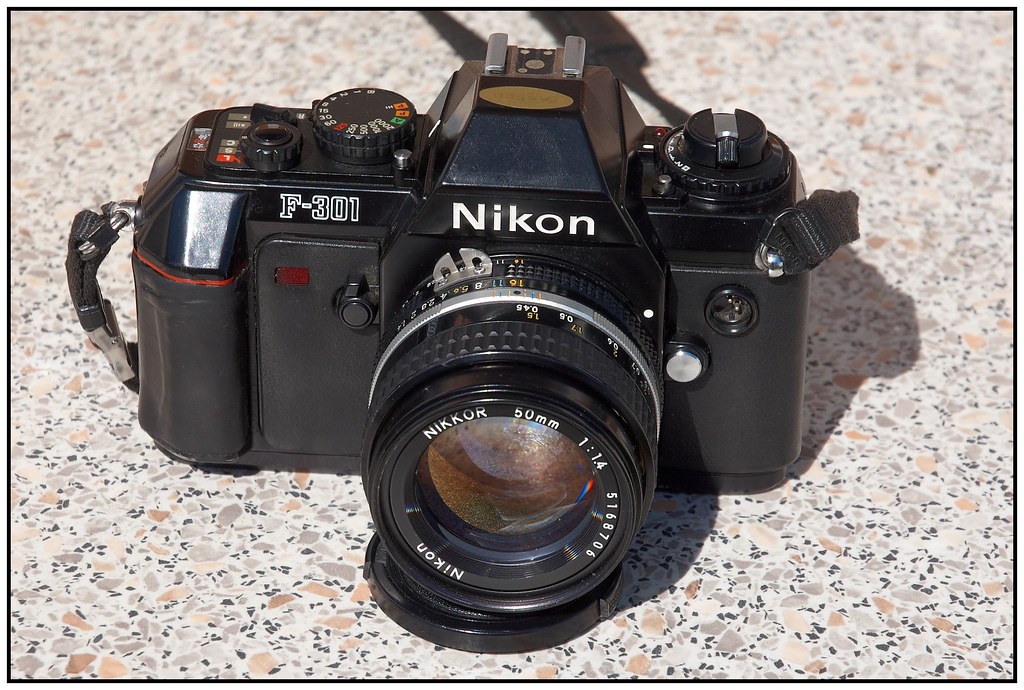 And finally the F501, Nikons first auto focus camera. 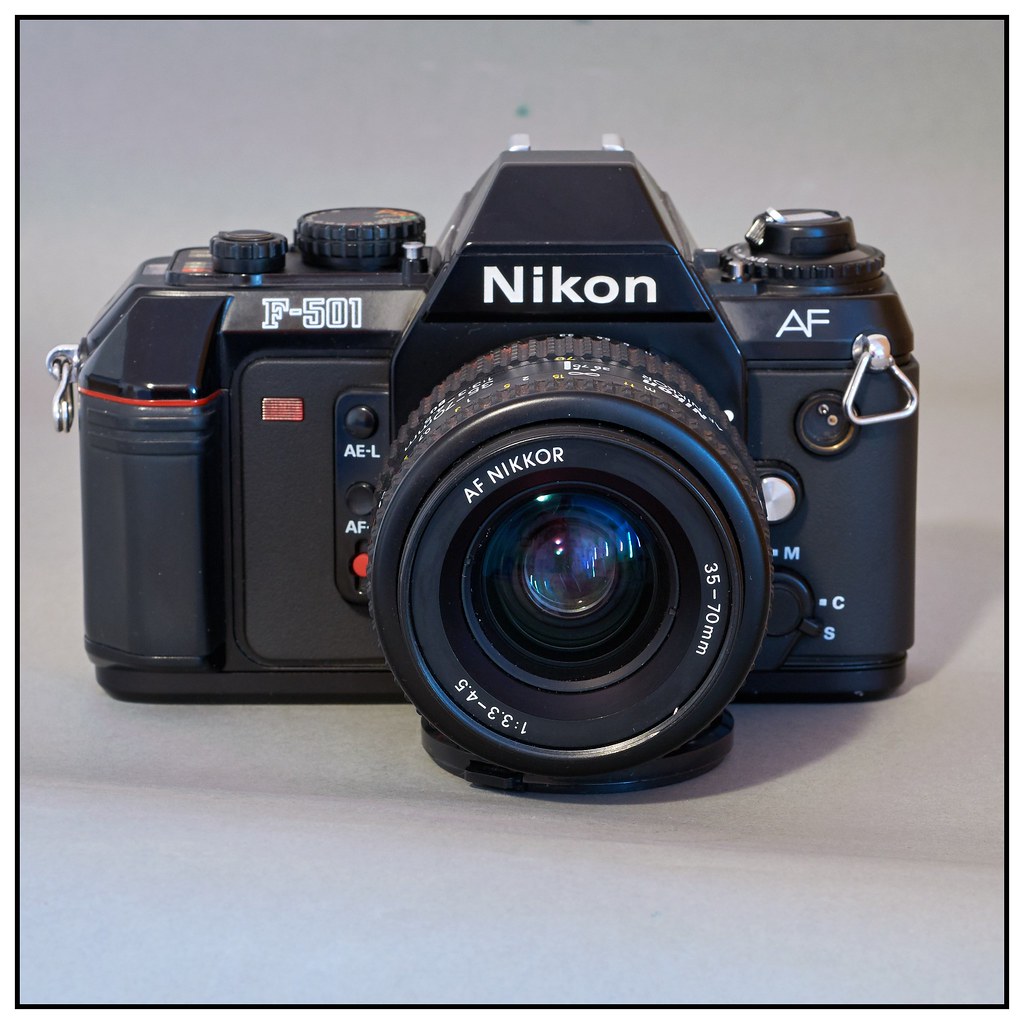 F301 and F501 side by side 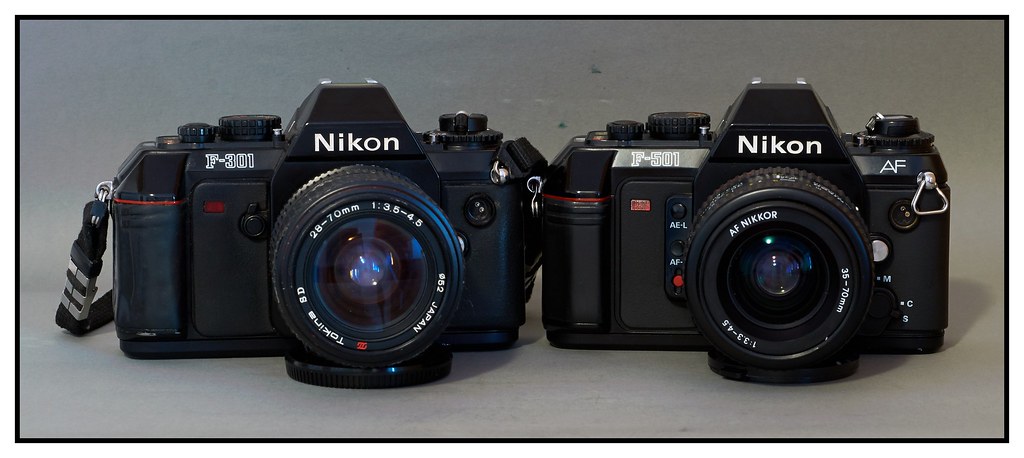
|
|
|
|
Post by hannes on Feb 10, 2018 13:57:31 GMT -5
I'm not only Nikon fan, I'm also Olympus fan. Every Olympus fan and collector runs for the single digit OM series. Olympus virus hit me, when the friend with the FG in my previous post got an OM-2. This camera felt so good and was even smaller than my FG. Some time later I found a good working OM-2n. The 2 digit OM series is undesirable and could be found very cheap, I got my first OM 10 as lens cover together with a lens I bought for my OM-2n. The OM-10 can be compared with the Nikon EM. No manual mode, AE mode only. While the EM never got manual mode as add on, there was a manual adapter available for the OM-10. Another OM 10 with original papers I found in a charity shop for 15€. The camera only needed a fresh battery. The flash was dead. 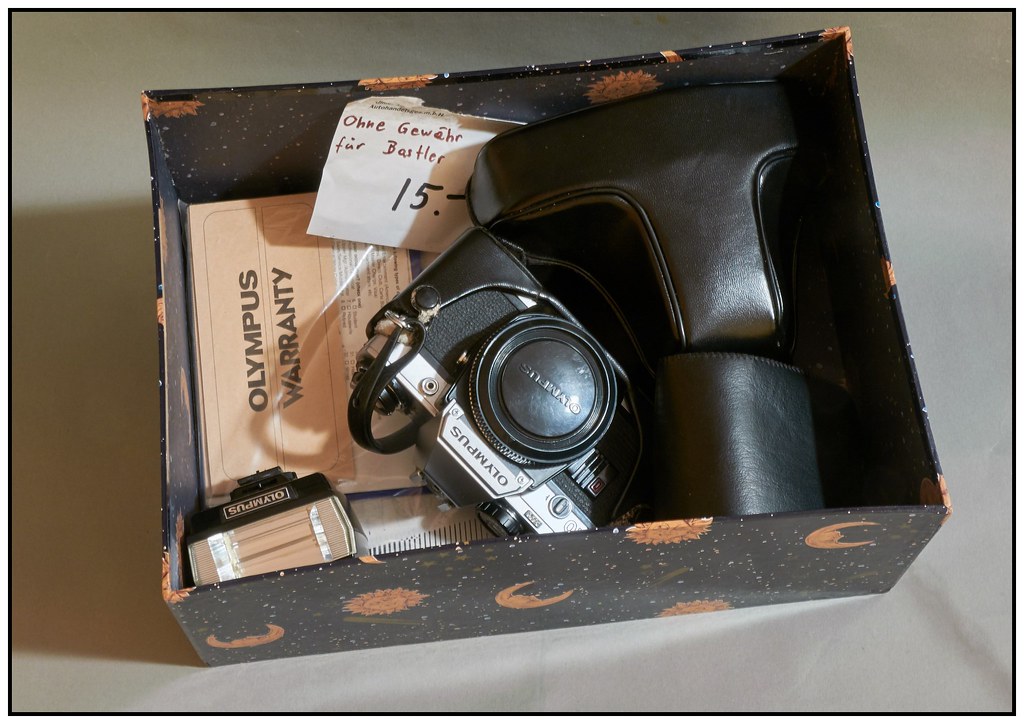 The OM-20 has manual mode "out of the box" and also some other minor improvements. Next big step was the OM-30. The first Olympus with focus assist and it could be converted to the first Olympus auto focus camera when the Zuiko Zoom 35-70mm/F4 Auto Focus lens was attached. The OM-30 and even more this first AF lens was not a big success. OM-30 is unwanted and still cheap. The lens now is rare and you need patience to find a good one. With the special trigger cord and a winder you could setup a focus trap. 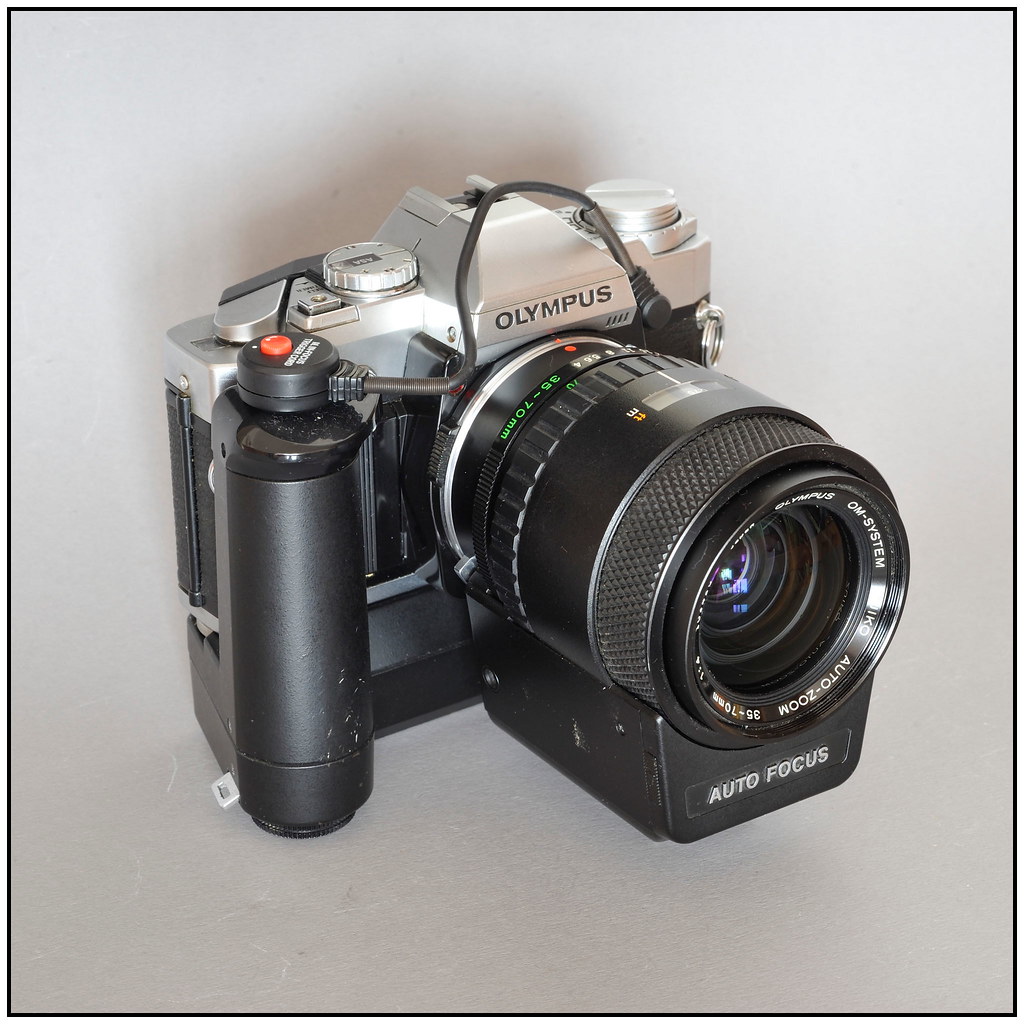 The last one of the classic 2 digit OM cameras was the OM-40. With its cheap plastic look most collectors pass by and do not get it. But the OM-40 is worth a try. It was the first Olympus with program mode. The OM-2 SP had some kind of program mode but in the OM-40 it was more the way which got standard for many later cameras. Everybody hunts for the OM-4, but maybe it is better to get a good working OM-40 for 1/10th of the price of a good OM-4. Next photo here, the 2 undesirable OMs under the mighty OM-4 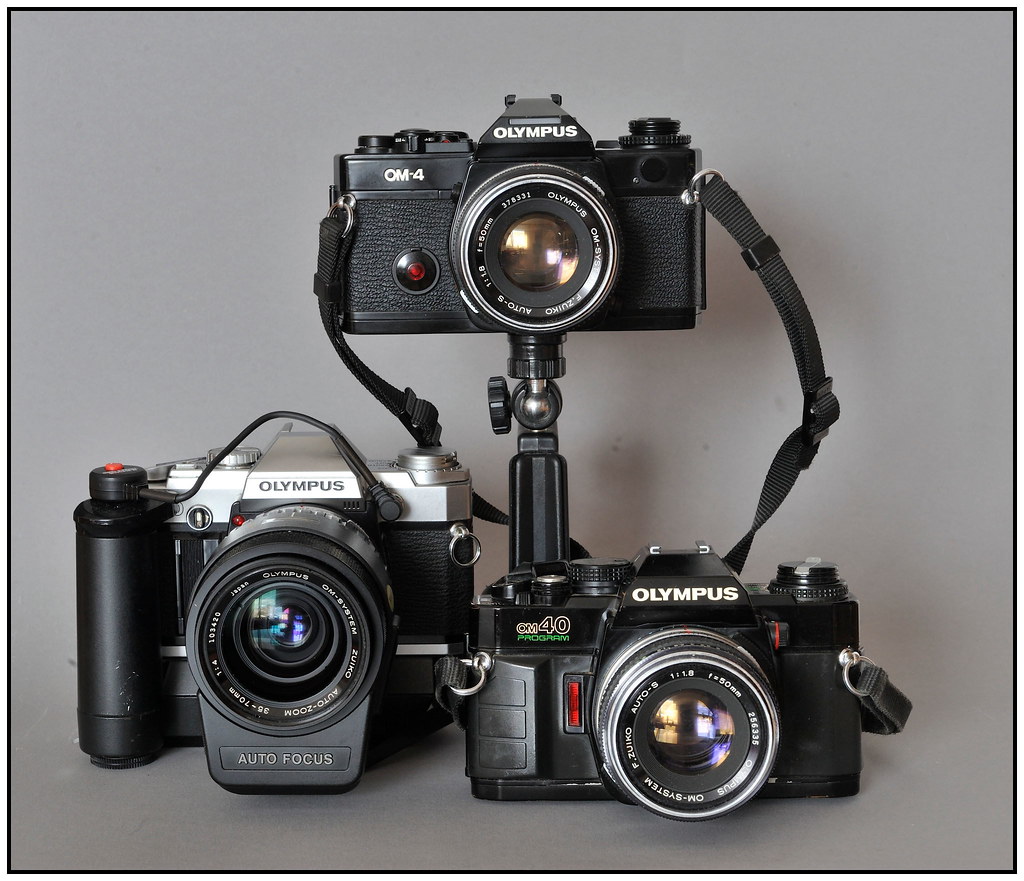 During 2nd half of 2017 I recognized that the prices of the 2 digit OM models are rising. I'm glad that I got mine while nobody else wanted them. I only miss the OM-20 in my collection. And the OM-3, but the prices of OM-3 are beyond my limits. The last undesirable OM in my collection is the OM77 or OM707. Olympus first real AF camera. It was a big fail for Olympus, it has the OM name and mount. But using non AF OM lenses does not make fun. It has program mode only with AF lens. It misses manual focus and manual setting of aperture. The only big advantage was the full synchro flash mode together with the F280 flash. This flash was the reason I bought this OM77. I wanted the flash for my OM-4Ti, because the OM-4Ti can also trigger this flash at all speeds. Which is nice feature if you want to use fll flash outdoors. 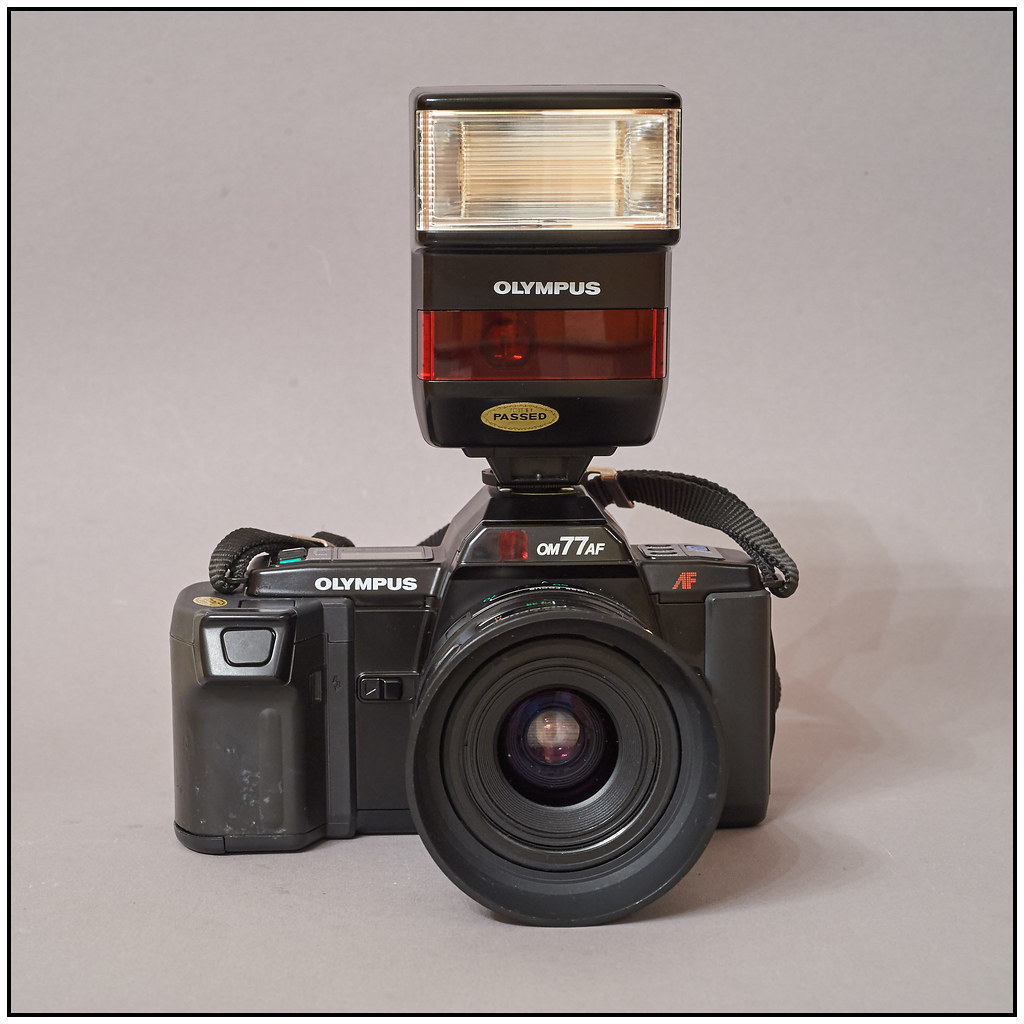 Hannes |
|




